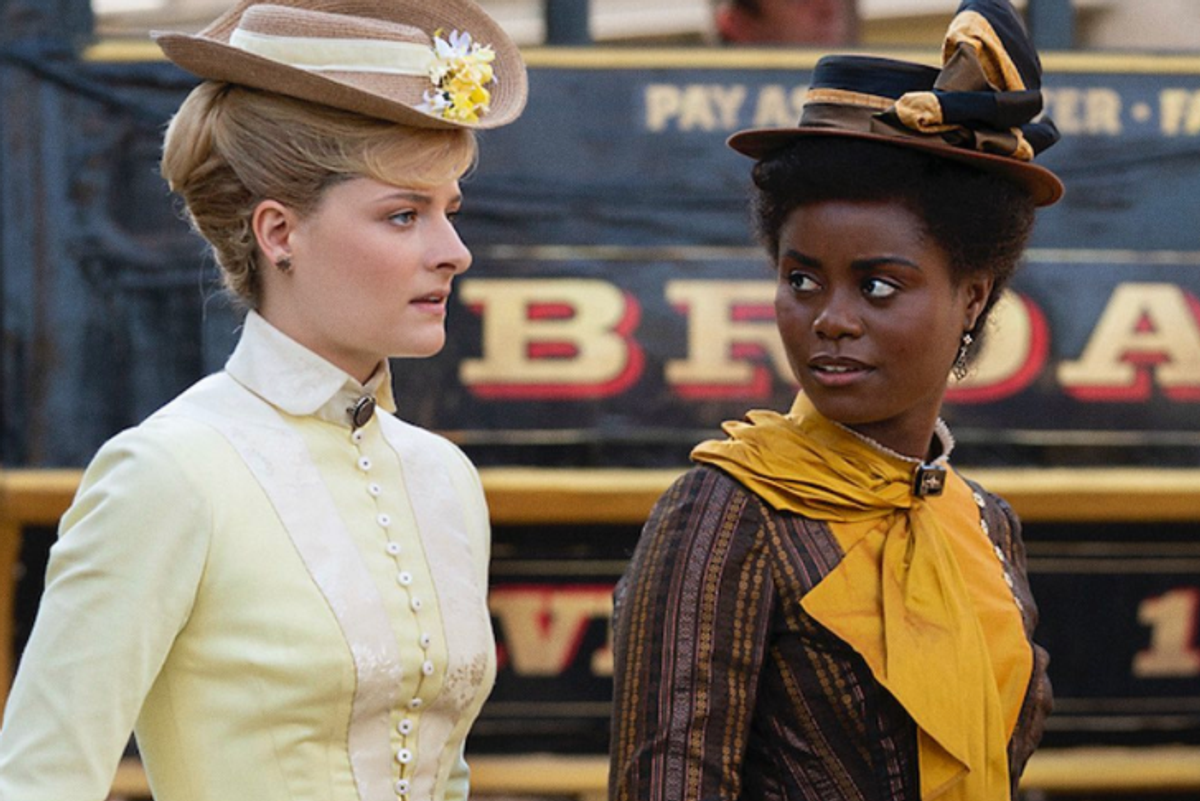
“Downton Abbey” fans have been rejoicing over Julian Fellowes’ newest historical drama “The Gilded Age.” Instead of London at the beginning of the 20th century, audiences are transported to (the truly new) New York of 1882, where aristocrats Agnes van Rhijn and Ada Brook reside.
Despite the different backdrops, “The Gilded Age” has much of the same aspects as its predecessor: conflict between the ways of old and new, weighty scrambles up the social ladder and, of course, the rich emotional narratives of the privileged class.
But “The Gilded Age” does offer something that “Downton Abbey” does not, and it’s a piece of history rarely portrayed or taught, yet real and important all the same: the story of the Black elite.
Young white woman Marian Brook (played by Louisa Jacobson) is surprised when she shows up to the home of her new friend Peggy Scott (played by Denée Brown), hoping to offer her a “gift” of old used shoes. Marian quickly realizes the error of her bias. Her Black friend, daughter to wealthy and educated parents, living in an opulent home with her own staff, had want for nothing. Certainly not worn out shoes.
This picture of Black excellence–where Black men and women enjoy money and influence—rarely makes an appearance in film and television, and in general is an overlooked aspect of history. In an interview with The New York Times, "The Gilded Age"’s historical consultant Erica Armstrong Dunbar pointed out, “What does the average person know about the Black elite in New York in the 1880s? The answer is very little if anything.”
As someone who grew up not even knowing about Tulsa and Black Wall Street until well into my twenties, and still knowing very little beyond that, I’d have to agree.
Julian Fellowes aims to remedy that in his depiction of the Scott family, and considers it a duty of artistic integrity. In an interview with The Columbian, he shared “I wanted very much to make ‘The Gilded Age’ distinctively American. And I didn’t believe I could do that without having a Black narrative and a Black family alongside the others. It just didn’t feel right to, actually.”
And it seems that Fellowes has done his due diligence, not only consulting with with Dunbar, but in co-creating the show with Black writer Sonja Warfield, as well as reading books like “Black Gotham,” which traces author Carla Peterson’s family history in the prosperous, upper-class Black communities of New York. According to The Columbian, the character of Peggy is even inspired by multiple real life trailblazers of the time, including Ida B. Wells (NAACP founder), Julia C. Collins (America’s first cited published Black female author) and Susan McKinney Steward (New York’s first Black female doctor).
Historical dramas featuring affluent, high-class Black characters are so rare, even Broadway legend Audra McDonald, who plays Peggy’s mother Donna Scott, was shocked to discover her role didn’t “perpetuate the tired old stereotype.”
On The Grio’s podcast “Acting Up,” McDonald shared how “people forget that during Reconstruction, with the constitutional amendments and emancipation and the end of slavery and giving Black men the right to vote and hold office, a lot of formerly enslaved people made big strides very quickly. Blacks had their own communities in Brooklyn and what was called ‘the Tenderloin’ at the time. They needed to have businesses to serve their own communities, and so that’s how you ended up with Black pharmacists and dentists and doctors and undertakers and lawyers and all of that. We needed all these things to serve our own communities — our own thriving communities, and there was a social structure that existed within that.”
Once she read the script, McDonald was thrilled to illuminate this often hidden world, “with all of its intricacies and all of its mess.”
Intricate, indeed. And interesting, to boot. As well as a really amazing example of what can happen when empowering conversations of representation are had. I can only imagine how much more nuanced our understanding of history (Black history, in particular) would be, had families like the Scotts been a regular part of the curriculum. But thankfully, we have creators like Fellowes, who understand that historical fiction, when told authentically, can embody the spirit of those untold stories, shaping our minds and hearts here in the present.
- 17 stunning photos of black Victorians show how history really ... ›
- Who Wants To Play "Black Monopoly"? - Upworthy ›
- Black women are now America's most educated group. - Upworthy ›
- The story of Doris "Dorie" Miller during WWII - Upworthy ›
- 10 Black women bought first-class airplane tickets, and it revealed a lot about race in the U.S. - Upworthy ›

